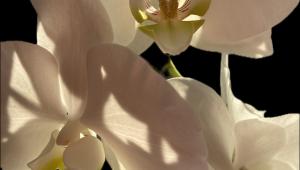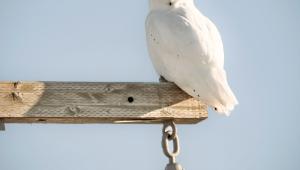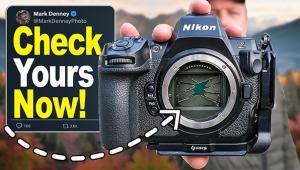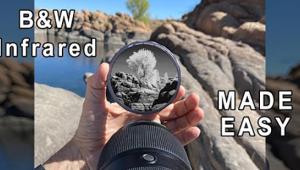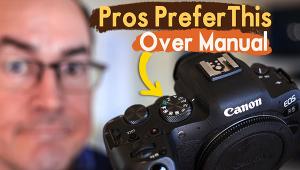Print Permanence; An Epson White Paper Page 2
100% cotton fiber matte coated papers are most suitable for fine art printing. Cotton papers are generally acid free and lignin free. Some manufactures add alkaline buffers to cotton papers for increased protection from atmospheric contaminants. When used in conjunction with pigment-based inks, these papers provide excellent image quality and the longest overall print life on the market.
Challenges of Print Permanence Testing
Consumers can evaluate inkjet prints for image quality and for handling characteristics
such as resistance to scratches, moisture, smudging, folding and tears, but
comparative print permanence testing is the only way to predict how environmental
factors will affect a print over time. The key environmental factors that impact
prints include:
· Light
· Dark Keeping
· Temperature and Humidity
· Gaseous Pollutants
· Water
· Light
Exposure to light was and continues to be the leading cause of fading with traditional
silver-halide color prints. It is important to remember that different silver-halide
print products from the same or different manufacturers fade at different rates.
Inkjet prints made with dye-based inks or pigment-based inks are also susceptible
to light fading, but at different rates. In addition the paper used will affect
the rate of fade and different grades of dyes will yield significantly different
results both for color reproduction and lightfastness. When compared under equivalent
test conditions, inkjet prints made with pigment-based inks and printed on papers
designed to react favorably with them yield significantly better lightfastness
than do most dye-based inkjet prints. They will also last longer when displayed
in well lit environments than will traditional silver-halide color prints.
Because the subject is complicated, users must exercise care when trying to
understand how manufacturers position and promote claims of lightfastness. Manufacturers
generally recommend only certain combinations of specific inks with specific
papers. The use of other inks or other papers, even from the same manufacturer,
can result in far lower protection from fading. Dye-based inks in particular
typically achieve higher levels of lightfastness only with specific papers,
while pigmentbased inks offer greater resistance on a wide range of papers.
Therefore, as explained below, caution should be used regarding sweeping print
permanence claims for products such as Eastman Kodak's Ultima paper. Eastman
Kodak uses significantly lower test criteria than industry accepted practices
to achieve this rating.
[5] See www.kodak.com.
· Lux Levels
Lux is a unit of measure that indicates the quantity of light that falls on
a surface.
The most widely accepted industry practice for accelerated lightfastness testing
is exposure of photographic prints to glass filtered cool-white fluorescent illumination that simulates indoor display for
10 to 12 hours a day at a brightness level of at least 450 lux. This 450 lux or higher methodology has been accepted as a minimum by
the large majority of manufacturers in the industry. Eastman Kodak has caused much confusion in the marketplace by basing
its claims on a very low 120 lux level. At a minimum this level delivers 3.7 times less illumination than the industry
accepted 450 lux or higher. The likely result is that users of Eastman Kodak products who expect their prints to last in displayed
conditions may be disappointed over time. [7]
[6] "Standard" Indoor Illumination Levels Used by Printer, Ink,
and Media Manufacturers
120 lux/12 hrs/day |
450 lux or 500 lux/10 hrs/day or 12 hrs/day |
Kodak AgfaPhoto* |
Agfa-Gevaert** Fuji Hewlett-Packard Epson Canon Lexmark Ilford Konica-Minolta DuPont Ferrania InteliCoat Somerset Arches LexJet Lyson Luminos Hahnemuhle American Inkjet MediaStreet |
*AgfaPhoto GmbH (Germany)
** Agfa-Gevaert NV (Belgium)
[6] Filtration Conditions Used by Printer, Ink, and Media Manufacturers with CW Fluorescent Illumination
UV Filter |
Glass Filter |
Kodak |
AgfaPhoto* Agfa-Gevaert** Fuji Hewlett-Packard Epson Canon Lexmark Ilford Konica-Minolta DuPont Ferrania InteliCoat Somerset Arches LexJet Lyson Luminos Hahnemuhle American Inkjet MediaStreet |
*AgfaPhoto GmbH (Germany)
**Agfa-Gevaert NV (Belgium)
Eastman Kodak has been criticized for using a combination of other test methods
to increase print permanence claims for all its products, whether they are silver-halide, dye-sub or inkjet. For example, in
addition to a dim 120 lux light level, Eastman Kodak uses more intense exposure
over a shorter period of time than do others in the industry. This practice
potentially introduces higher levels of reciprocity failure, in which a print
could be predicted to fade more slowly than would actually occur if it were
exposed at lower illumination over a longer time period. Image degradation processes
usually proceed slowly; therefore test duration is very important because faster
acceleration produces less accurate results. Eastman Kodak also follows an unusual
practice of providing print permanence ratings only with 100% ultraviolet (UV)
filtration, which further compromises the integrity of their ratings because
all photographic materials fade more rapidly in the presence of UV. Most companies
provide permanence ratings based on testing with a glass filter (approximately
30% UV filtration) to simulate framing prints under glass. Some companies provide
ratings with both a glass filter and a UV filter for customers who choose to
frame with special UV resistant materials. With all these factors in play at
once, Eastman Kodak is making display-life predictions for all its products
including Kodak's Ultima paper and its traditional silver-halide papers
that are up to 5 times longer than if they relied on the more rigorous industry
accepted tests. [7]
Using lesser standards, prints that have a lightfastness rating of 19 years
based on comparative testing with industry accepted test practices could suddenly
have a lightfastness rating of over 100 years with such low test criteria.
[6] See: Table 2 in "A Review of Accelerated Test Methods For Predicting
The Image Life of Digitally-Printed Photographs -- Part II," by Henry
Wilhelm, IS&T's NIP20: 2004 International Conference on Digital Printing
Technologies, pp. 664--669,
November 1, 2004, available at www.wilhelm-research.com.
[7] See Table 2 in WIR Display Permanence Ratings for Current Products in the
4x6-inch Printer Category, Wilhelm Imaging Research, Inc., December 7, 2004,
available at www.wilhelm-research.com.
WIR Print Display Permanence Ratings 4x6 Inch Photo Printer Category
[7] Type of Printer/Paper/Ink |
WIR v3.0 Endpoint at Both 1.0 and 0.6Densities
Cool White Fluorescent Illumination Years of Display Based on 450lux/12hrs/day
Prints Framed Under Glass |
| 1. Epson PictureMate Personal Photo Lab (pigment-based inkjet prints) · Printed with Epson PictureMate Inks and PictureMate Photo Paper |
104years |
| 2. HP Photosmart 325 and 375 Compact Photo Printers (dye-based inkjet prints) · Printed using HP Vivera Inks (HP No. 95 or No. 97 Tri-color cartridges) With HP Premium Plus and HP Premium Photo Papers, High Gloss, Glossy, or Soft Gloss |
82 years |
| · HP Photosmart 325 and 375 B&W prints using HP No. 100 Gray Photo cartridge With HP Premium Plus and HP Premium Photo Papers, High Gloss, Glossy, or Soft Gloss |
115 years |
| · Printed using HP Vivera Inks (HP No. 95 or No. 97 Tri-color cartridges) and Kodak Ultima Picture Paper, High Gloss (ColorLast "Lasts Over 100 Years" version) |
now in test |
| 3. Fujicolor Crystal Archive Type One Paper (silver-halide color prints) · Printed with Fuji Frontier 370 digital minilab and Fuji washless chemicals |
40 years |
| 4. Kodak EasyShare Printer Dock 6000 and 4000 Printers
(dye-sub prints) |
26 years |
| 5. Agfacolor Sensatis and Agfacolor Splendix Papers (silver-halide color prints) · Printed with Agfa d-lab.2plus/Select digital minilab and Agfa washless chemicals |
22 years |
| 6. Kodak Edge Generations and Royal Generations Papers (silver-halide color prints) · Printed with Noritsu QSS-3011SM digital minilab and Kodak washless chemicals |
19 years |
| 7. HP Photosmart 145 and 245 Compact Photo Printers (dye-based inkjet prints) · Printed using HP No. 57 Tri-color cartridge with HP Premium Plus and HP Premium Photo Papers, High Gloss, Glossy, or Soft Gloss |
18 years |
| · HP Photosmart 145 and 245 B&W prints using HP No. 59 Gray Photo cartridge With HP Premium Plus and HP Premium Photo Papers, High Gloss, Glossy, or Soft Gloss |
115 years |
| · Printed with HP No. 57 Tri-color cartridge and Kodak Ultima Picture Paper, High Gloss (ColorLast "Lasts Over 100 Years" version) |
11 years |
| 8. Konica Minolta QA Paper Impresa and Centuria For Digital (silver-halide color prints) · Printed with Konica Minolta R2 Super 1000 digital minilab and Konica washless chemicals |
17 years |
| 9. Olympus P-10 Printer (dye-sub prints) |
8 years |
| 10. Canon CP-200, CP-220, CP-330, CP400 and CP500 Printers (dye-sub prints) | 7 years |
| 11. Sony DPP-EX5, DPP-EX7, and DPP-EX50 Printers (dye-sub prints) |
4 years |
- Log in or register to post comments













